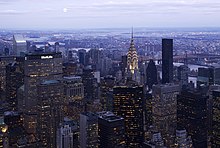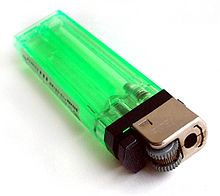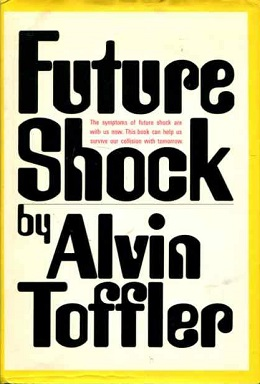Here are some of the ways technology has been predicted to rise in the book
Future Shock by Alvin Toffler in 1970.
"
Future shock[edit]
Alvin Toffler argued that society is undergoing an enormous structural change, a revolution from an
industrial society to a "
super-industrial society". This change overwhelms people. He argues that the accelerated rate of technological and social change leaves people disconnected and suffering from "shattering stress and disorientation"—future shocked. Toffler stated that the majority of social problems are symptoms of future shock. In his discussion of the components of such shock he popularized the term "
information overload."
This analysis of the phenomenon of information overload is continued in later publications, especially
The Third Wave and
Powershift.
In the introduction to an essay entitled "Future Shock" in his book,
Conscientious Objections,
Neil Postman wrote:
Development of society and production[edit]
Alvin Toffler distinguished three stages in development of society and production: agrarian, industrial and post-industrial.
Each of these waves develops its own "super-ideology” in order to explain reality. This ideology affects all the spheres which make up a civilization phase: technology, social patterns, information patterns, and power patterns.
The first stage began in the period of the
Neolithic Era with the advent of
agriculture, thereby passing from
barbarity to a
civilization. A large number of people acted as
prosumers (eating their grown food, hunting animals, building their own houses, making clothes,....). People traded by exchanging their own goods for commodities of others. The second stage began in England with the Industrial Revolution with the invention of the
machine tool and the
steam engine. People worked in factories to make money they could spend on goods they needed (it means they produced for exchange, not for use). Countries also created new social systems. The third stage began in the second half of the 20th century in the West when people invented automatic production, robotics and the
computer. The
services sector attained great value.
Toffler proposed one criterion for distinguishing between
industrial society and
post-industrial society: the share of the
population occupied in agriculture versus the share of city labor occupied in the services sector. In a post-industrial society, the share of the people occupied in agriculture does not exceed 15%, and the share of city laborers occupied in the services sector exceeds 50%. Thus, the share of the people occupied with brainwork greatly exceeds the share of the people occupied with physical work in post-industrial society.
The third wave led to the
Information Era (now). Homes are the dominant institutions. Most people carry on their own production and consumption in their homes or electronic cottages, they produce more of their own products and services and markets become less important for them. People consider each other to be equally free as vendors of prosumer-generated commodities.
Fear of the future[edit]
 Midtown Manhattan
Midtown Manhattan in New York City, the largest central business district in the United States
Alvin Toffler's main thought centers on the idea that modern man feels shock from rapid changes. For example, Toffler's daughter went to shop in
New York City and she couldn't find a shop in its previous location. Thus New York has become a city without a
history. The urban population doubles every 11 years. The overall production of goods and services doubles each 50 years in developed countries. Society experiences an increasing number of changes with an increasing rapidity, while people are losing the familiarity that old institutions (
religion,
family,
national identity,
profession) once provided. The so-called "
brain drain" – the
emigration of European scientists to the United States – is both an indicator of the changes in society and also one of their causes.
Features of post-industrial society[edit]

A generic, disposable lighter.
- Many goods have become disposable as the cost of manual repair or cleaning has become greater than the cost of making new goods due to mass production. Examples of disposable goods include ballpoint pens, lighters, plastic bottles, and paper towels.
- The design of goods becomes outdated quickly. (And so, for example, a second generation of computers appears before the end of the expected period of usability of the first generation). It is possible to rent almost everything (from a ladder to a wedding dress), thus eliminating the need for ownership.
- Whole branches of industry die off and new branches of industry arise. This affects unskilled workers who are compelled to change their residence to find new jobs. The constant change in the market also poses a problem for advertisers who must deal with moving targets.
- People of post-industrial society change their profession and their workplace often. People have to change professions because professions quickly become outdated. People of post-industrial society thus have many careers in a lifetime. The knowledge of an engineer becomes outdated in ten years. People look more and more for temporary jobs.
- To follow transient jobs, people have become nomads. For example, immigrants from Algeria, Turkey and other countries go to Europe to find work. Transient people are forced to change residence, phone number, school, friends, car license, and contact with family often. As a result, relationships tend to be superficial with a large number of people, instead of being intimate or close relationships that are more stable. Evidence for this is tourist travel and holiday romances.
- The driver's license, received at age 16, has become the teenager's admission to the world of adults, because it symbolizes the ability to move independently.
- Death of Permanence. The post industrial society will be marked by a transient culture where everything ranging from goods to human relationships will be temporary."

en.wikipedia.org




